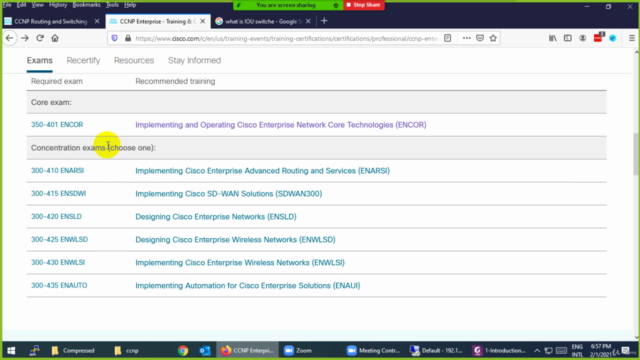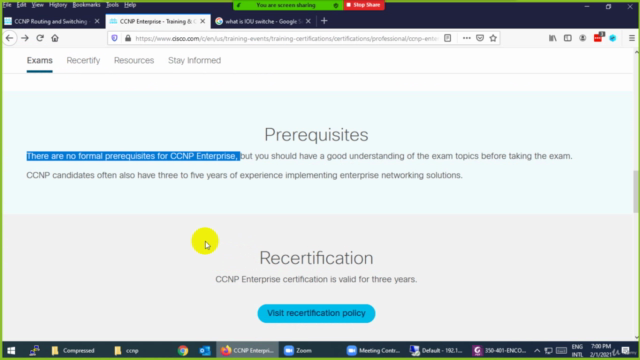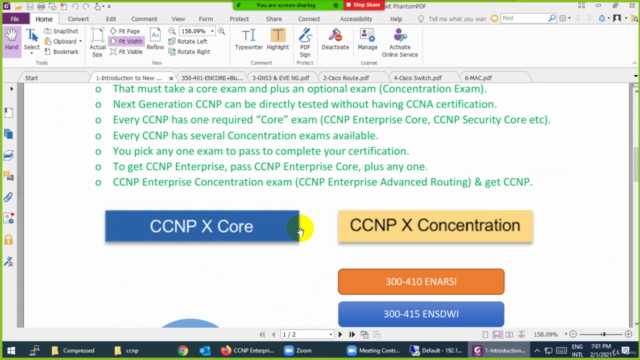CCNP,CCIE Enterprise: ENCOR 350-401 Training Part-1/2
Learn CCNP,CCIE Enterprise ENCORE with Step by Step Lab Workbook
4.58 (627 reviews)

4,053
students
25 hours
content
Feb 2025
last update
$69.99
regular price
What you will learn
You will be ready to pass ENCOR exams and get great hands on experience with our detailed labs.
Anyone who wants to prepare for the CCNP Enterprise certification exams.
Anyone who wants to learn routing at professional level.
Anyone who wants to prepare for the CCNP exam
Anyone who wants to prepare for the CCIE Written exam
Screenshots




Related Topics
3942532
udemy ID
3/27/2021
course created date
4/18/2021
course indexed date
Bot
course submited by